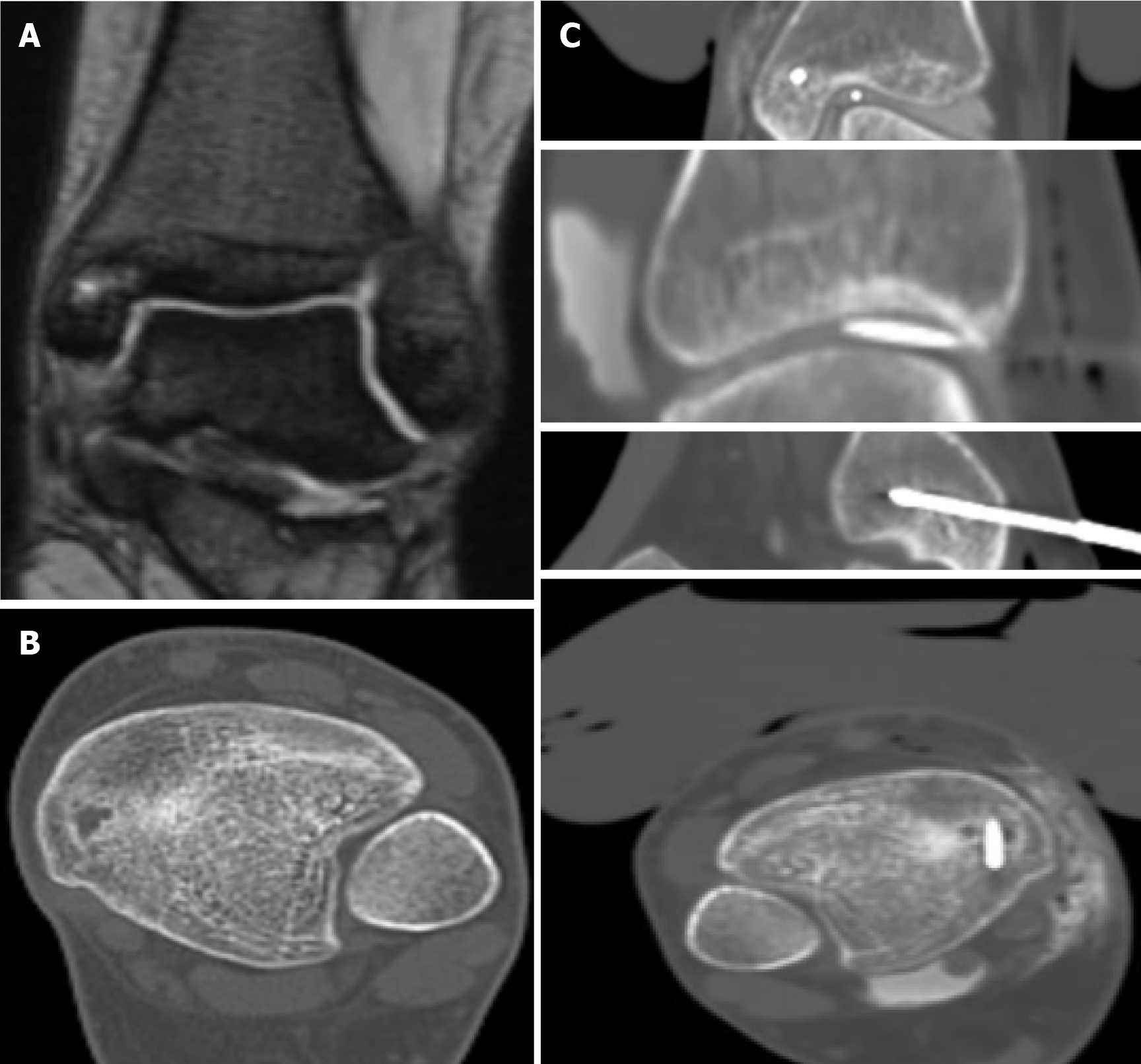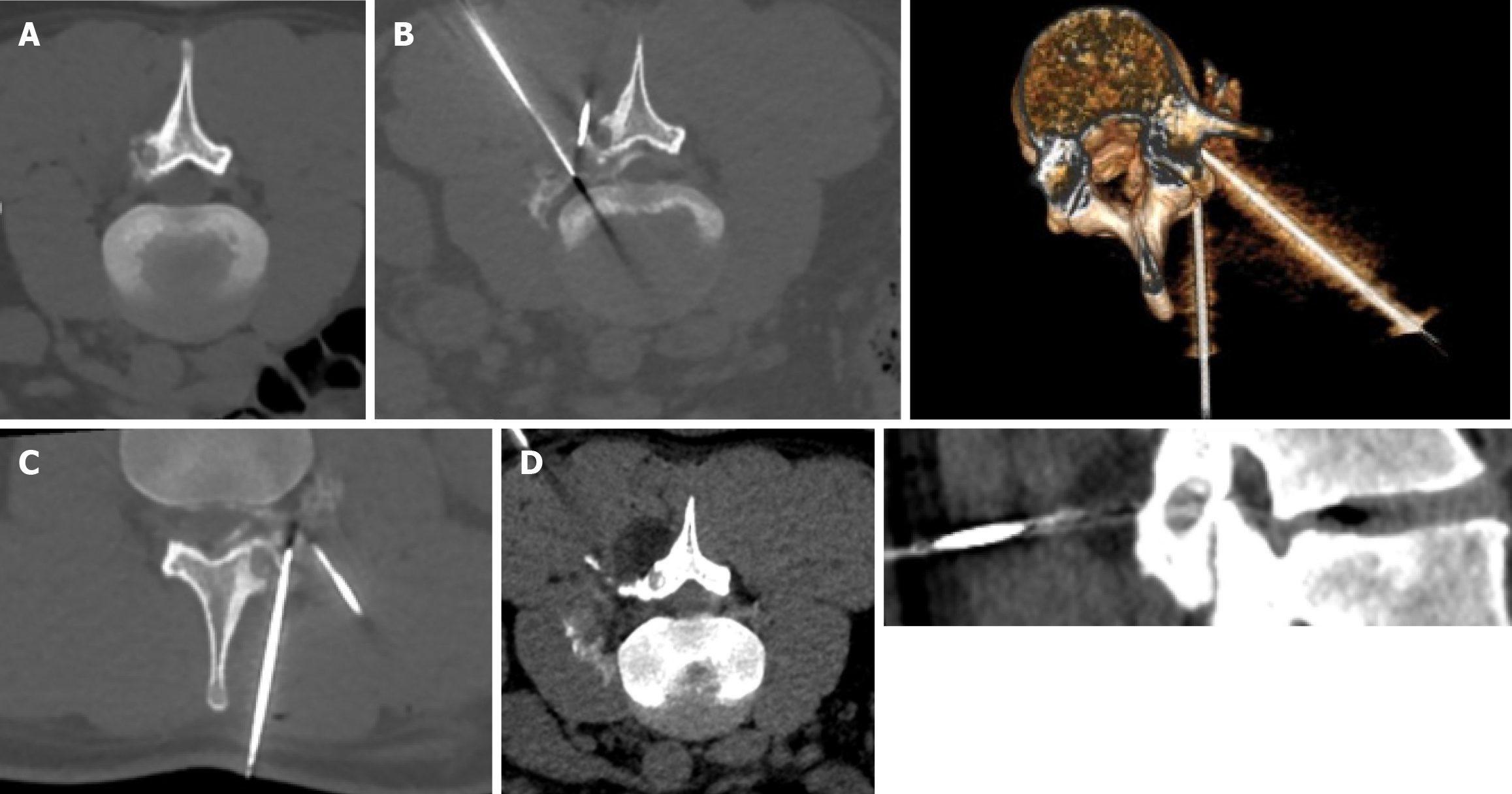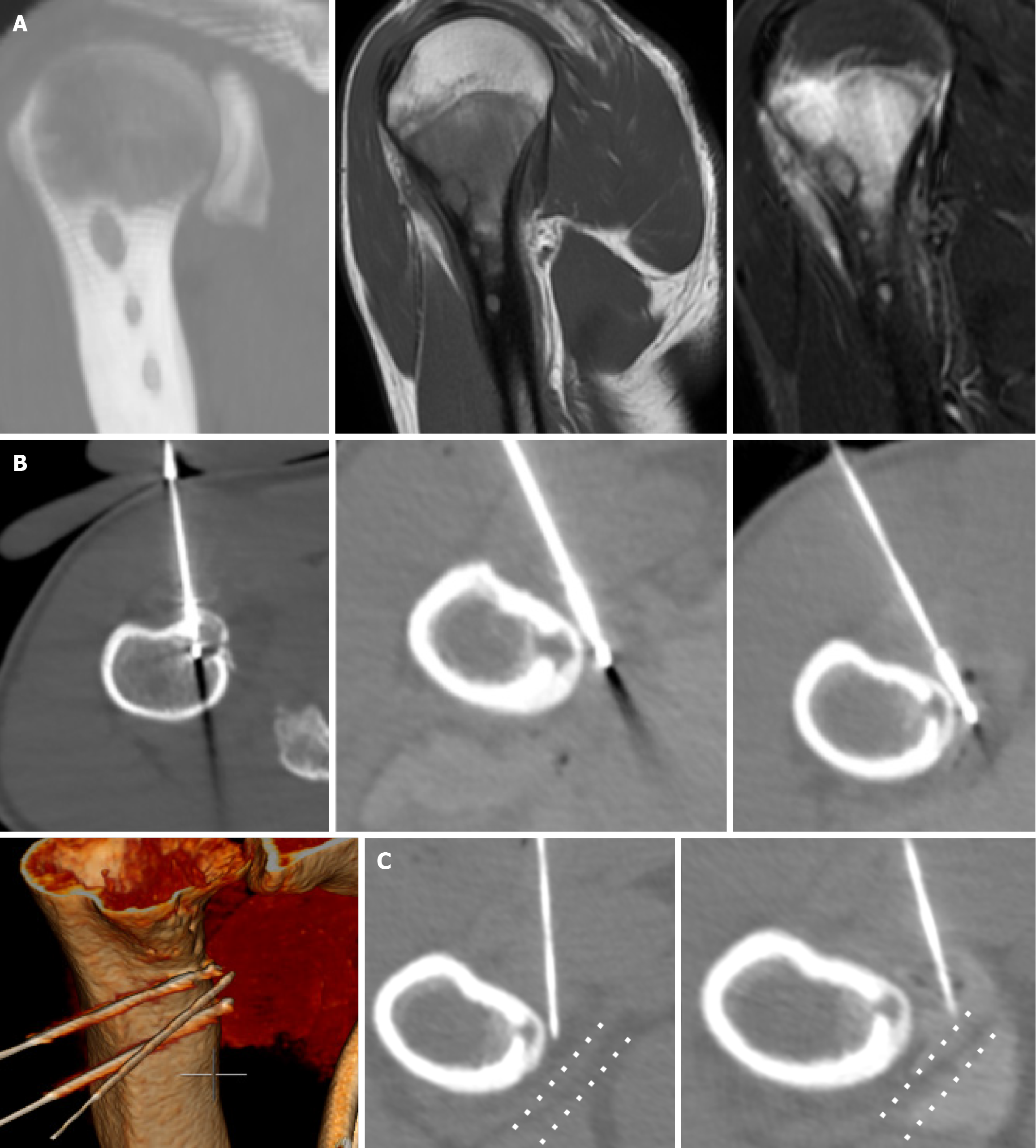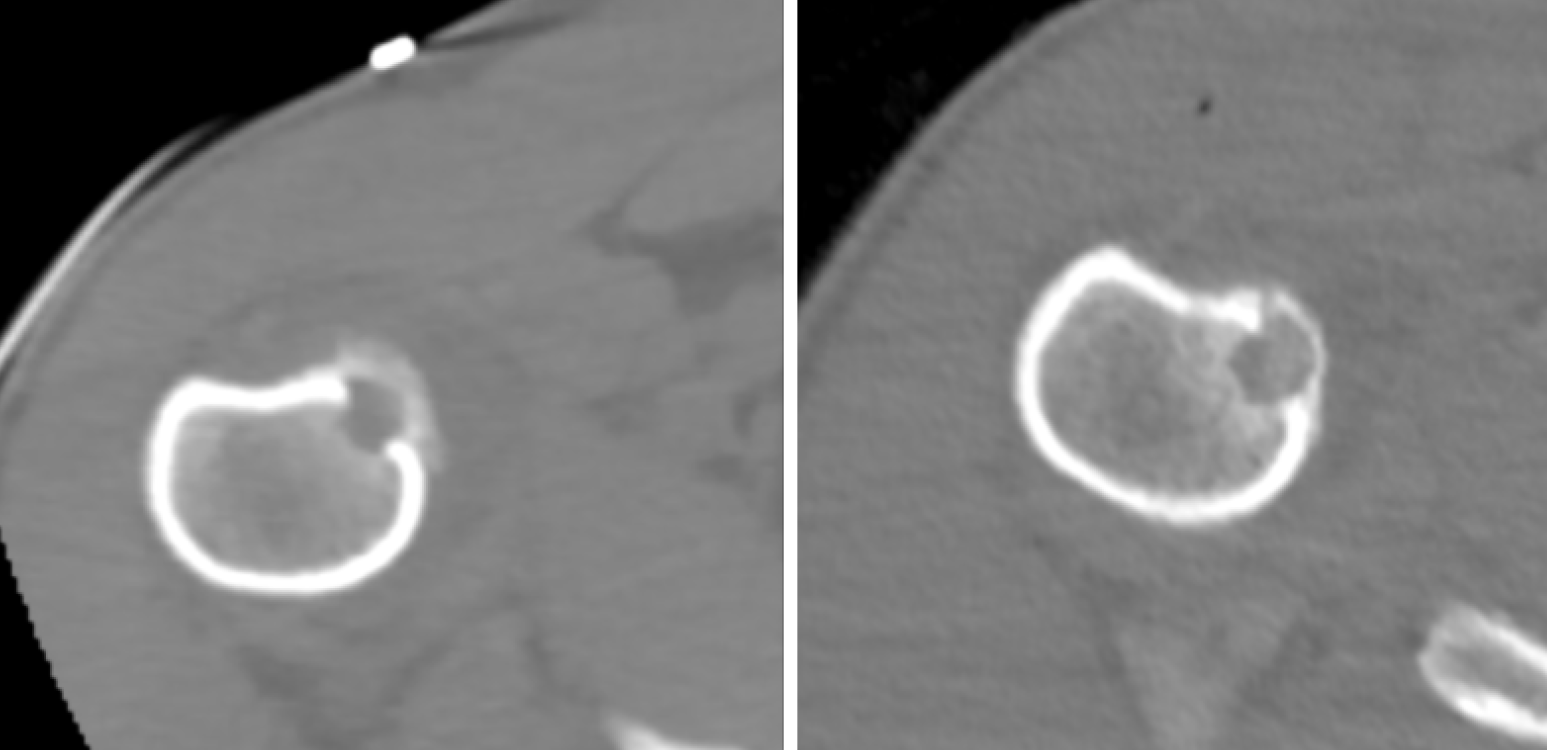Copyright
©The Author(s) 2024.
World J Radiol. Sep 28, 2024; 16(9): 389-397
Published online Sep 28, 2024. doi: 10.4329/wjr.v16.i9.389
Published online Sep 28, 2024. doi: 10.4329/wjr.v16.i9.389
Figure 1 Eighteen-year-old female-osteoid osteoma of the medial malleolus (tibia).
A: Coronal T2WI image reveals 1 cm lesion of the medial malleous in close proximity to the skin and the ankle joint; B: Computed tomography image demonstrates a lytic lesion with reactive sclerosis. The lesion was biopsied and confirmed as an osteoid osteoma; C: Cryoablation procedure: Cryoprobe placement inside the nidus and a spinal needle in the joint for active warming during the procedure. Skin was hydrodissected with a mixture of saline and local anesthetic and a warm glove was applied for protection.
Figure 2 Twenty-four-year-old male-osteoid osteoma of the L4-L5 facet joint.
A: Computed tomography axial image L4-L5 facet joint osteoid osteoma; B: Placement of the cryoprobe at an extraosseous position; C: Placement of a thermocouple near the nerve root for temperature monitoring. Spinal needle at the same level for epidural dissection and active warming; D: Iceball visualization as hypodense area covering the entire lesion.
Figure 3 Seventeen-year-old male-humerus bone multiple osteoid osteomas.
A: Computed tomography thick slice and magnetic resonance imaging showing three radiolucent lesions in head, epiphysis and diaphysis of right humerus bone with periosteal edema; B: Visualization of the three cryoprobes. Two of them were placed in extraosseous positions and one of them was placed in an intraosseous position; C: Hydrodissection of the axillary nerve with thermocouple for temperature monitoring, protection and active warming.
Figure 4 Twenty-three-year-old male-tibia ostoid osteoma.
A: Axial computed tomography image of a tibia osteoid osteoma; B: Placement of the cryoprobe at an extraosseous position parallel to the cortex; C: Hypodense ice covering the whole lesion.
Figure 5
One month after cryoablation procedure of osteoid osteoma of humerus bone reduction of the periosteal reaction.
- Citation: Michailidis A, Panos A, Samoladas E, Dimou G, Mingou G, Kosmoliaptsis P, Arvaniti M, Giankoulof C, Petsatodis E. Cryoablation of osteoid osteomas: Is it a valid treatment option? World J Radiol 2024; 16(9): 389-397
- URL: https://www.wjgnet.com/1949-8470/full/v16/i9/389.htm
- DOI: https://dx.doi.org/10.4329/wjr.v16.i9.389













